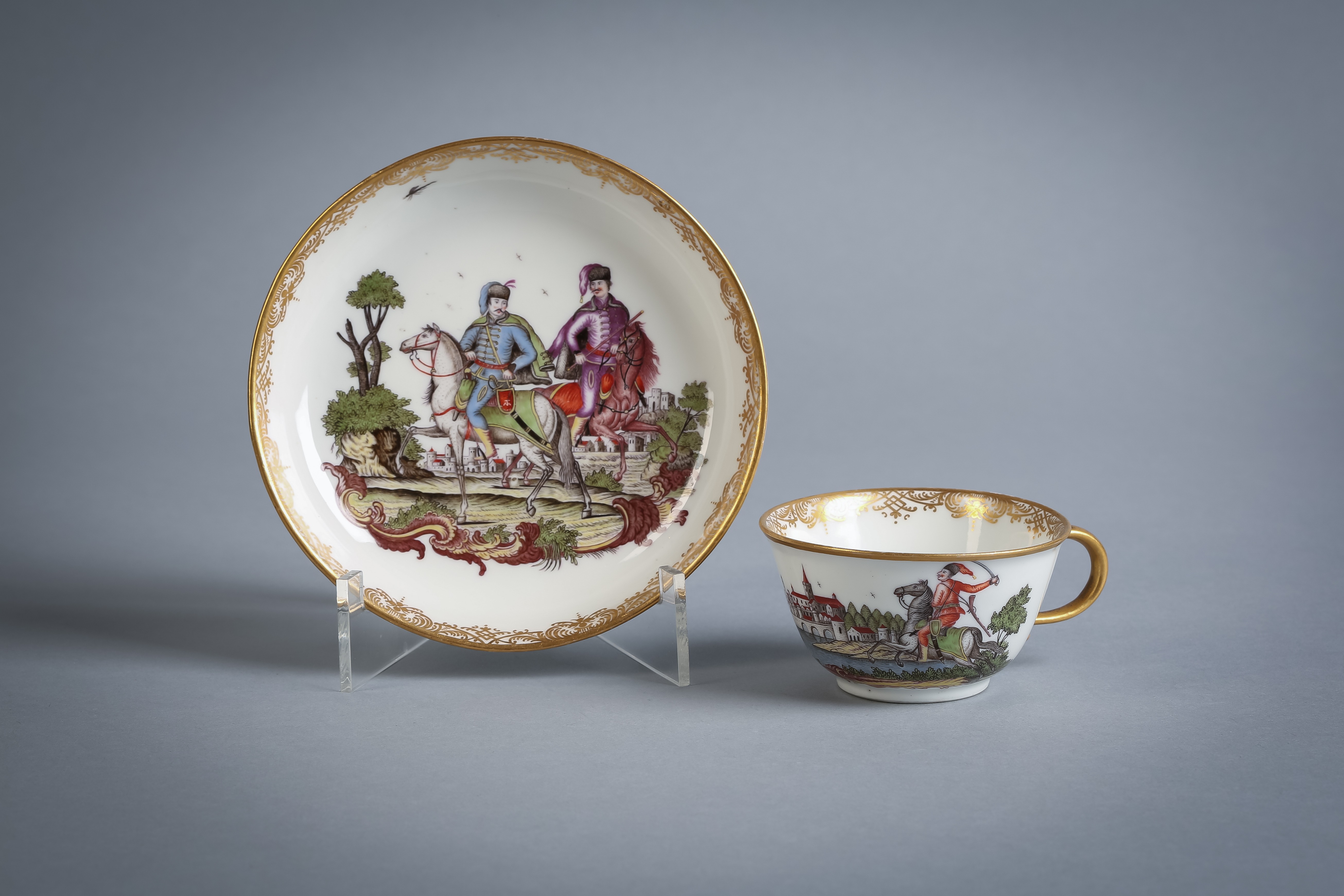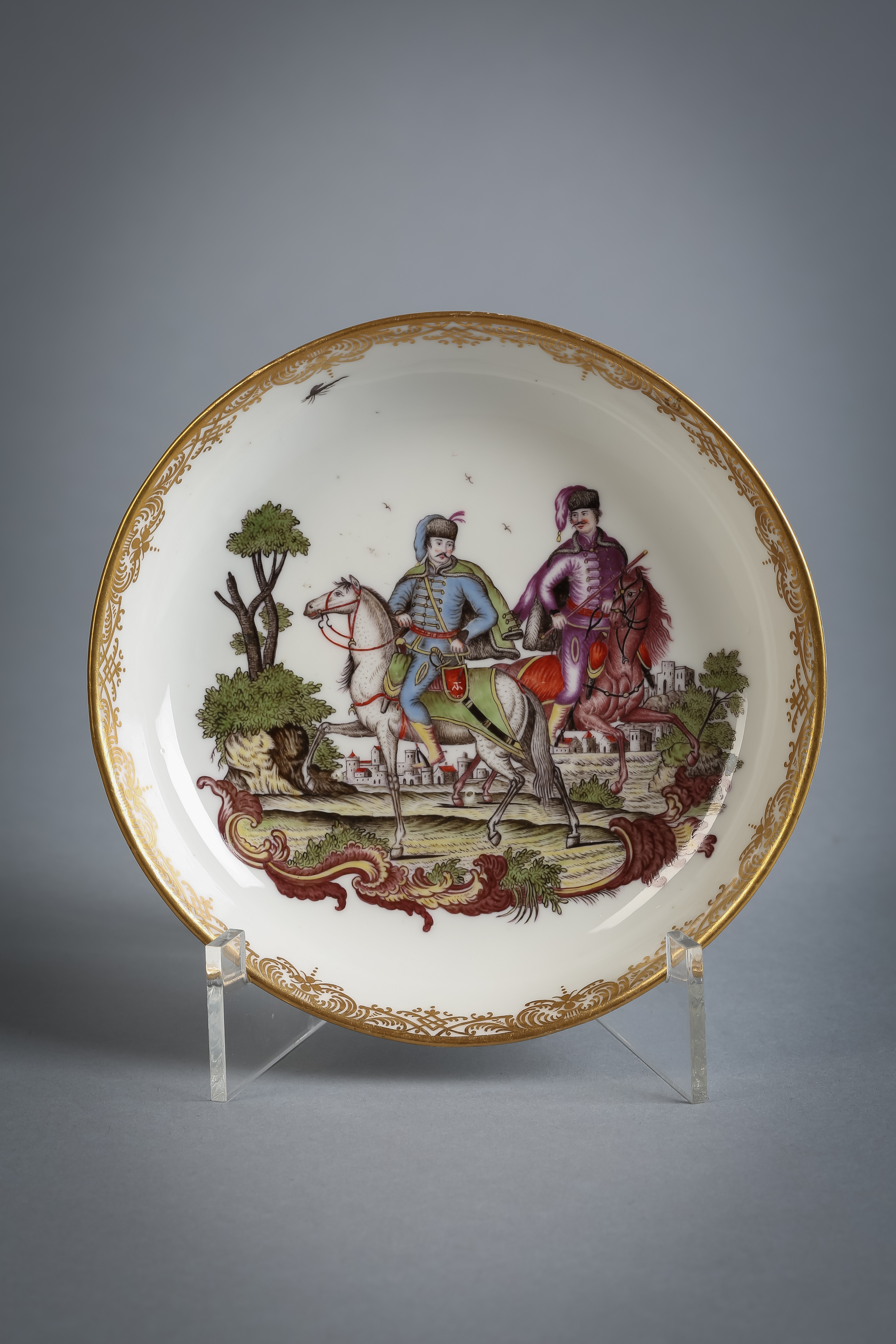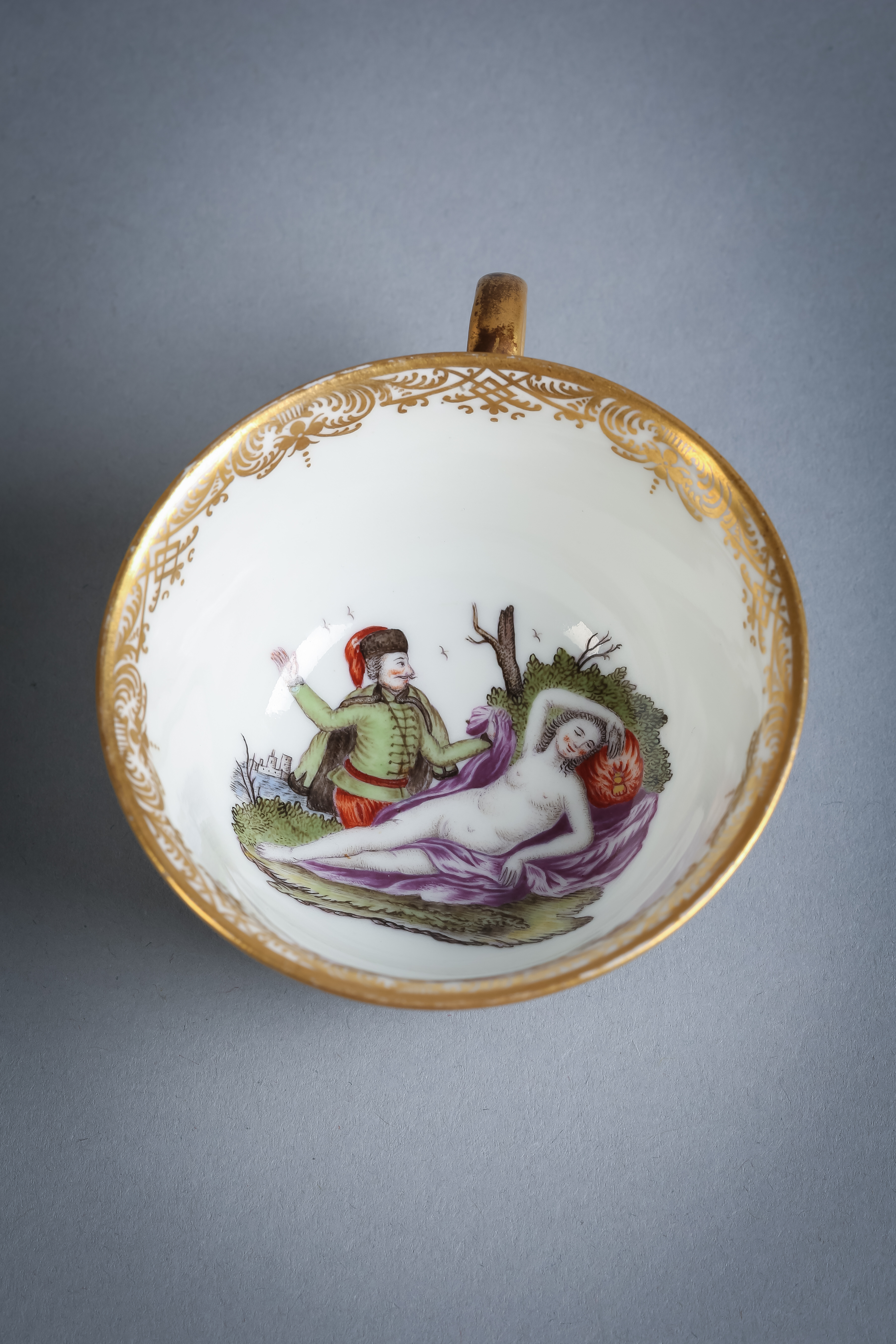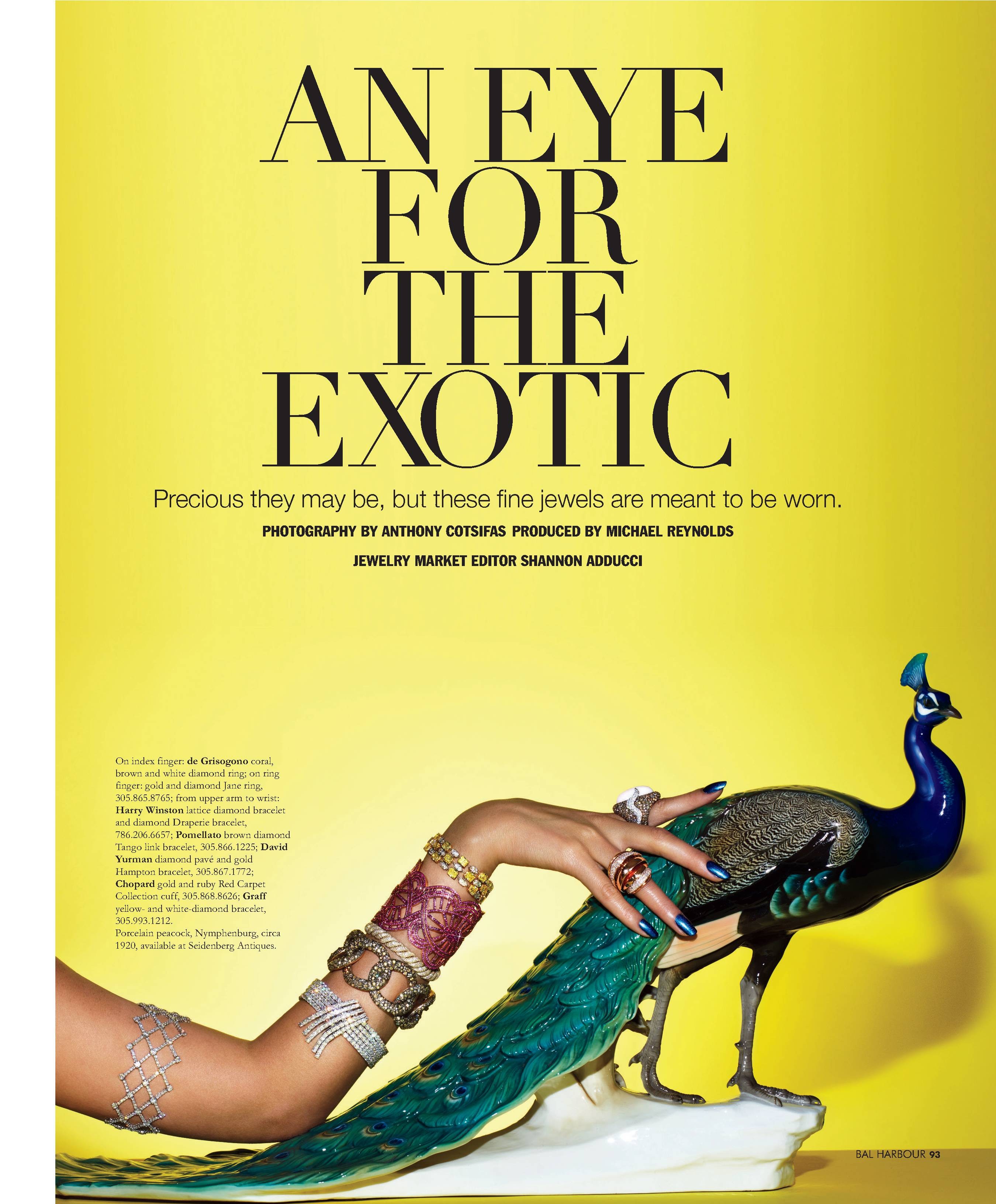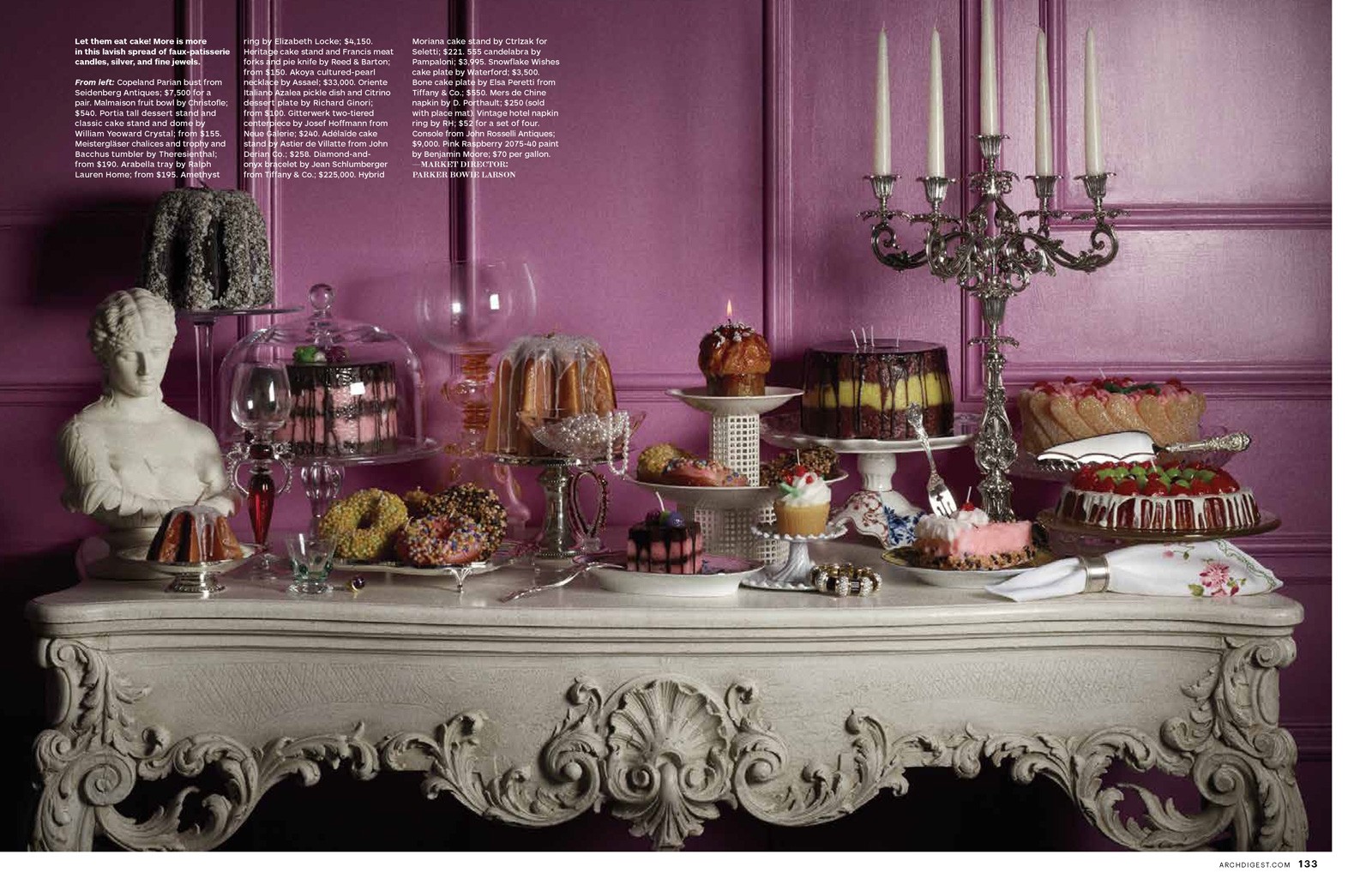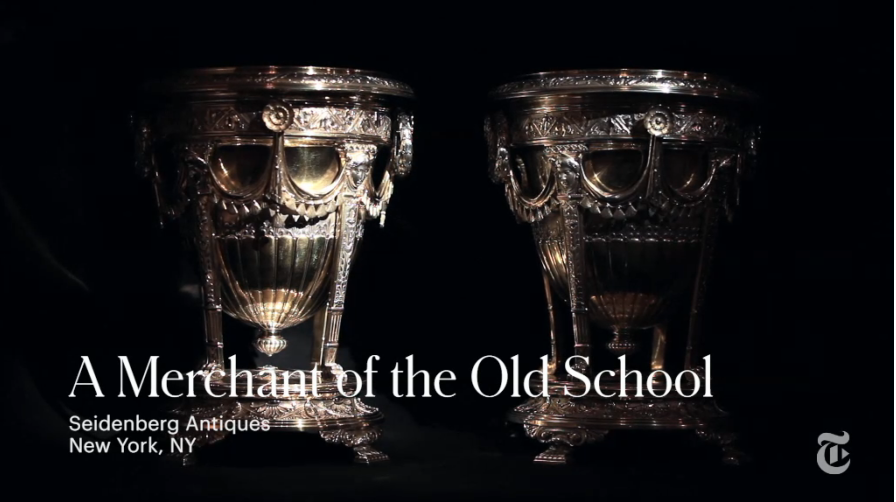Blog
(Meissen Cup and Saucer, circa 1750 - Offered by Seidenberg Antiques - Item #E4705 - $9,500)
“Now you know it’s a meaningless question
To ask if those stories are right
‘Cause what matters most is the feeling
You get when you’re hypnotized
Seems like a dream
They got me hypnotized”
-Bob Welch (Fleetwood Mac)
You are in a deep hypnotic dream. Everything seems real - familiar faces, familiar surroundings. Conversations are earnest and logical. But something becomes skewed – you can’t put your finger on it - and you suddenly awake. And even now as you lie awake attempting to recall the sequences of the dream you begin to lose your grip on its details and very soon – poof - it all vanishes.
Sometimes a painting or a work of art, in its clarity and beauty, can transfix us into a hypnotic dream. And just as suddenly we become aware of some dissonant detail that can jar us out of our reverie. We can then either shrug our shoulders and move on or look a little deeper.
Now let us examine with our 21st century eyes this Meissen cup and Saucer circa 1750. The saucer depicts two proud mustachioed Hussars astride their caparisoned horses in a landscape with buildings and castles in the background. A few birds fly overhead and a dragonfly hovers above. The colors are lush and the quality of the painting is superb with meticulous detail even down to a truncated tree limb. The cup has a vast and ambitious panoramic scene perfectly compressed onto its exterior. Here the Hussars are strutting their stuff near a moat or a river wherein a paddler steers his canoe. A fancy town lines the background and birds again fly overhead.
So far so good. We are now deeply enmeshed in our dream world of 18th century Germany. But let’s look at the painting inside the cup. Another mustachioed Hussar, no doubt on an important scouting expedition, has stumbled across this semi-clad woman covered up with the flimsiest of robes (and not too securely fastened at that) taking her afternoon nap. He removes her robe with his left hand – she conveniently remains in her deep sleep – and his right hand is held high in an exclamatory gesture of delight and wonder.
We awake (she doesn’t!) – what’s going on here? What kind of unusual sequence of events have we witnessed? Why would this 18th century ceramic artist present us with this illogical image? Why disturb this cushy image of the Noble Hussar – defending his homeland and battling the enemy – with this somewhat comic and erotic scene? Possibilities abound. Perhaps this naked woman is Venus and the painter is injecting an artistic riff on a popular 15th century image of Venus asleep in the forest. But regardless of the woman’s prototype, the question remains, why insert her at all into this scene? Perhaps he is skewering our preconceived sacred notion of the Noble Hussar and presenting the flip side and showing us his sordid obsession with sex. Or, perhaps there was an intention to surprise the tea drinker with a little comedy – imagine the drinker’s surprise at a cozy and affluent tea party when he looks into the cup filled with tea - even more so as he almost finishes the tea and becomes more aware that at the bottom of the cup, a naked woman appears like a fish glimpsed under water or a mirage in the desert.
Can our 21st century sensibility still bridge the chasm and make the leap into the 18th century world and into the mind of our painter? This is the question and the mystery that confronts all of us as we look back on the art of the past. For those of us who have the time for research, a whole world beckons. For those of us who don’t, we can still be fascinated and hypnotized by the mystery and by a past that may be irretrievable – growing dimmer and dimmer – like a dream - more elusive with each passing moment.
Jack Seidenberg
If a news editor would list the top ten stories of 2016 relating to the arts and antiques market, the proliferation of art advisors would surely be near the top. But it’s really not a new phenomenon. Ever since Bernard Berenson (and maybe even before), the art advisor has carved a niche in the business of buying and selling art. Unlike Berenson, whose reputation as an expert has been somewhat tarnished over time by his art advisory role and his association with Joseph Duveen, his successors are perfectly respectable. They are knowledgeable and bring a lot to the table. I speak from personal experience, having sold to art advisors representing clients with interests in ceramics, glass, silver and works of art. And so, I welcome this new trend.
At this moment however, I want to cast the spotlight on those who used to be the sole possessors of the art advisory title, but in an undeclared way and as an adjunct to their main occupation – that being the purchase and sale of works of art, or to put it another way, to those who actually possessed – that much-maligned term – “inventory.”
When I first joined my father in business around 40 years ago, customers would come into the shop marveling at the inventory and offering congratulations. He would, with characteristic humility, deflect these compliments and say tongue-in-cheek “these are all my mistakes.” It would always evoke a smile from those who understood the unspoken message – buying inventory is always a leap of faith. It involves faith in your knowledge and taste. But you may not be vindicated for a long time; the right customer may not come in, markets may fluctuate… So it’s almost a therapeutic exercise if a dealer humorously accepts from the get-go that despite his good taste and knowledge – it’s all a “mistake” until it's sold.
Once you somehow accept the notion that not everything you buy on Monday will sell on Tuesday then you begin to realize that without carrying an inventory you can’t really call yourself a dealer of antiques – inventory comes with the turf. You can’t deal from an empty cart.
But the dealer who carries inventory has an almost inalienable right to hang out the shingle “Art Advisor” as well. He almost always has deep knowledge of quality and value. But it’s more than the mere accumulation of textbook knowledge. He is an art advisor in that he manifests his passion and his taste. Buying and selling art and antiques is more than making a living – it is a way of living, a design for living. He brings his finely honed and highly developed aesthetic into play, an aesthetic developed and evolved over the decades. By choosing what items he wishes to carry in his inventory he shows what makes him tick. And a customer can take the measure of a dealer by what he carries in his business and how he carries on his business. It’s as if the display of the inventory sends off subtle vibrations – these emanations surely carry their own significant message - hence another facet of the art advisory role.
I conclude with a passage from the writings of the novelist Ross Macdonald who, discussing the art of writing, summed all this up in a far more succinct and imaginative manner.
“We writers, as we work our way deeper into our craft, learn to drop more and more personal clues. Like burglars who secretly wish to be caught, we leave our fingerprints on the broken locks, our voiceprints in the bugged rooms, our footprints in the wet concrete and the blowing sand.”
Jack Seidenberg
“The Technological Revolution,” “Globalization,” – these have become familiar terms in the past few years. But in the context of the presidential election upset, these terms have been used with even greater frequency to account for the anger and resentment of those voters whose industries were under siege and whose jobs, if not already eliminated, were being threatened.
Subsequent to the publication of the New York Times T Magazine (see previous post), the Times contacted us and did the following video about our shop.
https://www.nytimes.com/video/t-magazine/100000003...